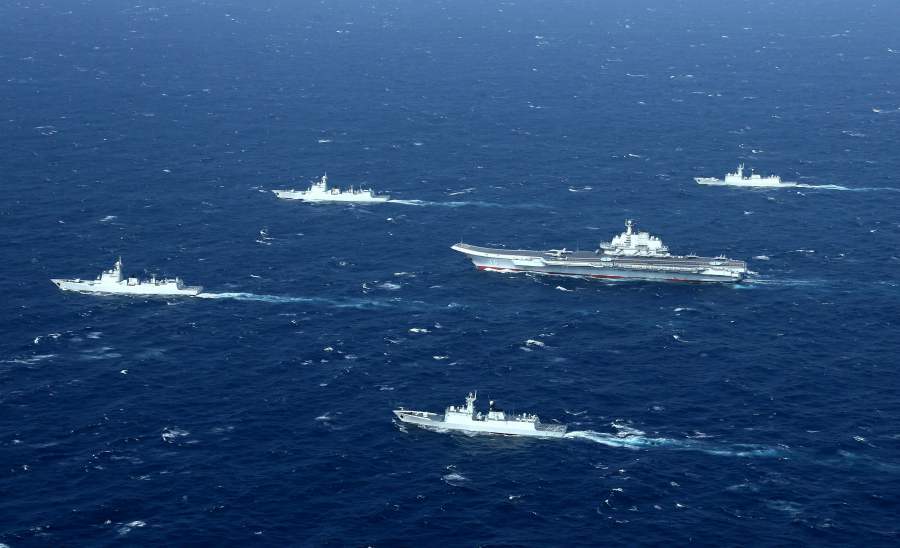
THERE are three issues this article seeks to address with regards to the contrasting diplomatic and military communication between the United States and China in relation to the South China Sea (SCS). First, both the US and China are placing their geopolitical interests at the forefront, with the SCS becoming the most strategically contested theatre between them.
Rivalry between the two nations is seen as having begun with the trade war that escalated in 2018 though it can be argued that US-China disagreements, opposing positions and counter-military responses in the SCS go further back to the early 2000s.
These include the April 2001 mid-air collision between a Chinese jet fighter and a US Navy surveillance plane off Hainan Island, and similar incidents involving military assets of US and China, such as intercepting and close manoeuvres in 2004, 2009, 2014 and 2016. What was initially a disagreement between the US and China on Freedom of Navigation FONOP) operations has grown into strategic rivalry involving multiple state actors in SCS.
Second, SCS territorial disputes have assumed a high strategic priority within the context of the Indo-Pacific concept. The Indo-Pacific is often referred to as the maritime space spanning the Indian Ocean, Southeast Asia and the Western Pacific although no boundaries define it. About 45 countries are considered being within the Indo-Pacific geographical range that includes Asia.
The US views the Indo-Pacific as a unified strategic theatre in its national security strategy and has stressed the importance of the area spanning the western coast of India to the Pacific.
Third, the Quadrilateral Security Dialogue (QUAD) between the US, Japan, India and Australia has been initiated to underlie the importance of engagement from the Pacific to the Indian Ocean to promote governance, democracy and the rule of law. The QUAD, convened in 2017, has advanced from dialogue to operations at the multilateral level and, interestingly, most operations are centred in SCS.
In 2019, the US, Japan, India and the Philippines navies held multilateral naval exercises in the SCS followed by naval manoeuvres by USN and Australian military ships in April this year. On July 19, Japan, the US, and Australia held trilateral exercises near the Philippines in the SCS. The US Secretary of Defence recently noted that the joint exercises by the USS Nimitz and the Indian navy were aimed at projecting power in the Indian Ocean. On the question of what the US intends to pursue, he said it was to deter cohesive action by China, ensure FONOP and overflight continuation and to support her Southeast Asia partners in defending themselves against aggression.
The US-China rivalry in the SCC has escalated beyond trade, access and commerce to outright power rivalry and confrontation. The question remains whether the region is indeed "peaceful" as commonly referred to by China, Asean and countries that are indirectly interested in open and free seas.
Statements by the US and China and military activities on the ground do not point to much progress towards de-militarising the SCS, and almost all efforts by Asean and China seem to be losing traction in that direction. The geopolitical situation in the SCS is hardening and there will be much spillover from Chinese militarisation of the features it claims within the nine-dashed lines.
The rise of China and its growing military capabilities has attracted much concern among Indo-Pacific nations. This has led the US, Japan, Australia, and India to operationalise the IP strategy, including the convening of QUAD, which is perceived as seeking to contain or manage the rise of China. Although against the spirit of Asean's core values of maintaining peace and stability by not siding with any external powers, the bloc has adopted an outlook on the Indo-Pacific that seeks to ensure that the Indo-Pacific could be a balance to great power hegemony in Asia.
Despite the emergence of Indo-Pacific strategies and strong activities by the US and its allies, Asean and China should continue efforts to resolve or manage SCS territorial disputes. Failing that, the region could be exposed to dire consequences arising from any military miscalculation. It is critical that Asean, China and Indo-Pacific partners to discuss and re-assess efforts in managing potential conflict in the SCS.
The writer is is a Fellow and Head of Centre for Straits of Malacca, with the Maritime Institute of Malaysia










No comments:
Post a Comment
How did you like the post, leave a comment. I would appreciate hearing from you all. Best wishes from JC's Naval, Maritime and Military News